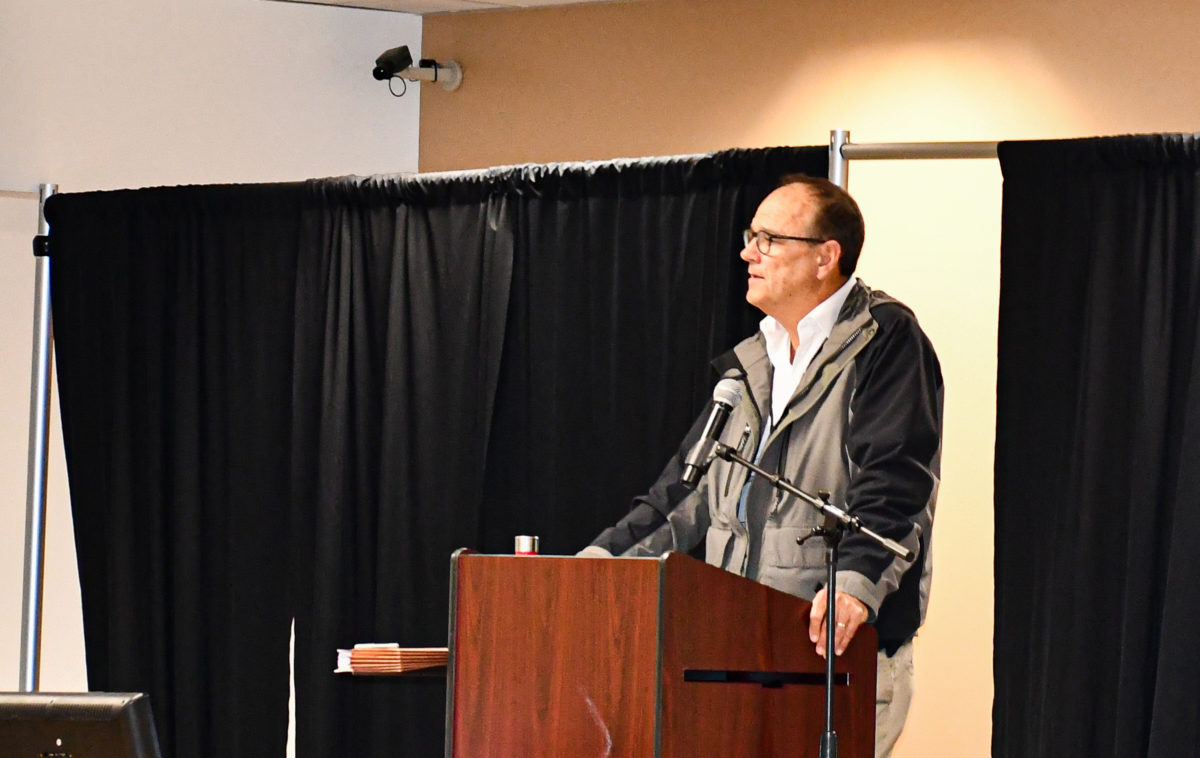Growers gathered in Fort Pierce last week for the Florida Citrus Show. More than 30 presentations and panel discussions were held during the two-day event. Topics covered included production, technology and markets.
With the U.S. Department of Agriculture (USDA) predicting the smallest citrus crop in more than 70 years, urgency to seek solutions to HLB was high on the agenda. Scott Angle, University of Florida vice president for agriculture and natural resources and leader of the University of Florida Institute of Food and Agricultural Sciences (UF/IFAS), summed up the sentiment with his welcome address.

“I think we all understand this is an industry that is hurting, and it is important to come together and support one another,” Angle noted. “I fully realize we are hanging on, hoping in the future the many technologies being tested by producers and UF/IFAS, USDA and other foundations, that maybe one of them will become that solution we are looking for rather than just trying to stay in business and hang on.”
New Thinking on Research Funding
While the scientific search for an HLB fix has been extraordinary and unprecedented, the much-needed solution or solutions to the disease remain elusive. Rick Dantzler, chief operating officer of the Citrus Research and Development Foundation (CRDF), said the industry needs to rethink how research is funded. The CRDF is the primary organization that evaluates and directs funding to research projects. During his presentation, he addressed the concept of directed research.
“We got this idea from the Florida sugarcane industry,” Dantzler said. “What that industry does is identify the question that needs to be answered and then scours the landscape to find the scientist they believe is best able to answer that question. They then sit down with the scientist and work out a budget, figure out the parameters of the project and then fund it.”
Dantzler added that can be a little tricky under the rules governing a quasi-public organization like CRDF that must make the process open to all. But he said there is a way to direct requests for proposals that solicits specific answers to questions. The approach, he said, could cut several months off the project-funding process.
Updated Guidance on Nutrition
The citrus industry is turning its attention to new research on fertilizer and nutrition recommendations. That was on full display during the Florida Citrus Show with about a dozen presentations touching on the topic.
Kelly Morgan, UF/IFAS professor of soil fertility and water management, briefed growers on new research to update recommendations for various micronutrients and macronutrients. He noted that many of the current recommendations were developed prior to HLB’s onset. Those recommendations are still good for healthy trees but need to be updated for HLB-affected trees.
That work is underway, and UF/IFAS will seek funding this legislative session to conduct new research on citrus nutrition recommendations, particularly on phosphorous. These findings will be important in guiding future best management practices.











